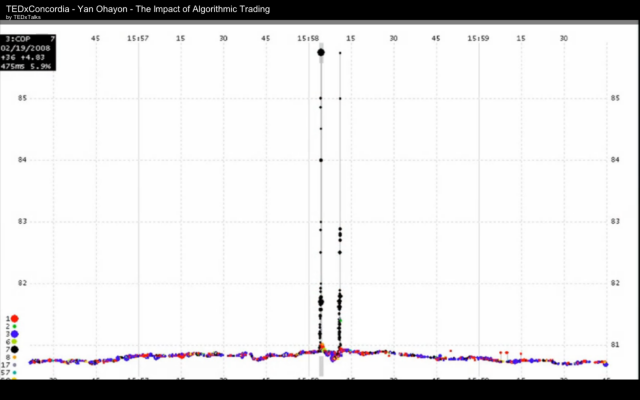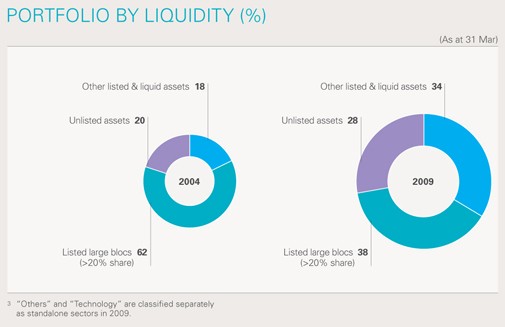Modern portfolio theory Wikipedia the free encyclopedia
Post on: 30 Май, 2015 No Comment

Portfolio analysis redirects here. For theorems about the mean-variance efficient frontier, see Mutual fund separation theorem. For non-mean-variance portfolio analysis, see Marginal conditional stochastic dominance .
Modern portfolio theory (MPT ) is a theory of finance that attempts to maximize portfolio expected return for a given amount of portfolio risk, or equivalently minimize risk for a given level of expected return, by carefully choosing the proportions of various assets. Although MPT is widely used in practice in the financial industry and several of its creators won a Nobel memorial prize for the theory, [ 1 ] in recent years the basic assumptions of MPT have been widely challenged by fields such as behavioral economics .
MPT is a mathematical formulation of the concept of diversification in investing, with the aim of selecting a collection of investment assets that has collectively lower risk than any individual asset. This is possible, intuitively speaking, because different types of assets often change in value in opposite ways. [ 2 ] For example, to the extent prices in the stock market move differently from prices in the bond market. a collection of both types of assets can in theory face lower overall risk than either individually. But diversification lowers risk even if assets’ returns are not negatively correlated—indeed, even if they are positively correlated. [ 3 ]
More technically, MPT models an asset’s return as a normally distributed function (or more generally as an elliptically distributed random variable ), defines risk as the standard deviation of return, and models a portfolio as a weighted combination of assets, so that the return of a portfolio is the weighted combination of the assets’ returns. By combining different assets whose returns are not perfectly positively correlated. MPT seeks to reduce the total variance of the portfolio return. MPT also assumes that investors are rational and markets are efficient .
MPT was developed in the 1950s through the early 1970s and was considered an important advance in the mathematical modeling of finance. Since then, some theoretical and practical criticisms have been leveled against it. These include evidence that financial returns do not follow a Gaussian distribution or indeed any symmetric distribution, and that correlations between asset classes are not fixed but can vary depending on external events (especially in crises). Further, there remains evidence that investors are not rational and markets may not be efficient. [ 4 ] [ 5 ] Finally, the low volatility anomaly conflicts with CAPM ‘s trade-off assumption of higher risk for higher return. It states that a portfolio consisting of low volatility equities (like blue chip stocks) reaps higher risk-adjusted returns than a portfolio with high volatility equities (like illiquid penny stocks). A study conducted by Myron Scholes, Michael Jensen, and Fischer Black in 1972 suggests that the relationship between return and beta might be flat or even negatively correlated. [ 6 ]
Contents
§ Concept [ edit ]
The fundamental concept behind MPT is that the assets in an investment portfolio should not be selected individually, each on its own merits. Rather, it is important to consider how each asset changes in price relative to how every other asset in the portfolio changes in price.
Investing is a tradeoff between risk and expected return. In general, assets with higher expected returns are riskier. The stocks in an efficient portfolio are chosen depending on the investor’s risk tolerance, an efficient portfolio is said to be having a combination of at least two stocks above the minimum variance portfolio. For a given amount of risk, MPT describes how to select a portfolio with the highest possible expected return. Or, for a given expected return, MPT explains how to select a portfolio with the lowest possible risk (the targeted expected return cannot be more than the highest-returning available security, of course, unless negative holdings of assets are possible.) [ 7 ]
Therefore, MPT is a form of diversification. Under certain assumptions and for specific quantitative definitions of risk and return, MPT explains how to find the best possible diversification strategy.
§ History [ edit ]
Harry Markowitz introduced MPT in a 1952 article [ 8 ] and a 1959 book. [ 9 ] Markowitz classifies it simply as Portfolio Theory, because There’s nothing modern about it. See also this [ 7 ] survey of the history.
§ Mathematical model [ edit ]
In some sense the mathematical derivation below is MPT, although the basic concepts behind the model have also been very influential. [ 7 ]
This section develops the classic MPT model. There have been many extensions since.
§ Risk and expected return [ edit ]
MPT assumes that investors are risk averse, meaning that given two portfolios that offer the same expected return, investors will prefer the less risky one. Thus, an investor will take on increased risk only if compensated by higher expected returns. Conversely, an investor who wants higher expected returns must accept more risk. The exact trade-off will be the same for all investors, but different investors will evaluate the trade-off differently based on individual risk aversion characteristics. The implication is that a rational investor will not invest in a portfolio if a second portfolio exists with a more favorable risk-expected return profile – i.e. if for that level of risk an alternative portfolio exists that has better expected returns.
Note that the theory uses standard deviation of return as a proxy for risk, which is valid if asset returns are jointly normally distributed or otherwise elliptically distributed. There are problems with this, however; see criticism .
Under the model:
- Portfolio return is the proportion-weighted combination of the constituent assets’ returns.
- Portfolio volatility is a function of the correlations ρ ij of the component assets, for all asset pairs (i. j ).

In general:
- Expected return:
where is the return on the portfolio, is the return on asset i and is the weighting of component asset (that is, the proportion of asset i in the portfolio).
- Portfolio return variance:
where is the correlation coefficient between the returns on assets i and j. Alternatively the expression can be written as: , where for i =j.
- Portfolio return volatility (standard deviation):
For a two asset portfolio:
- Portfolio return:
- Portfolio variance:
For a three asset portfolio:
- Portfolio return:
- Portfolio variance:
§ Diversification [ edit ]
An investor can reduce portfolio risk simply by holding combinations of instruments that are not perfectly positively correlated (correlation coefficient ). In other words, investors can reduce their exposure to individual asset risk by holding a diversified portfolio of assets. Diversification may allow for the same portfolio expected return with reduced risk. These ideas have been started with Markowitz and then reinforced by other economists and mathematicians such as Andrew Brennan who have expressed ideas in the limitation of variance through portfolio theory.
If all the asset pairs have correlations of 0—they are perfectly uncorrelated—the portfolio’s return variance is the sum over all assets of the square of the fraction held in the asset times the asset’s return variance (and the portfolio standard deviation is the square root of this sum).














